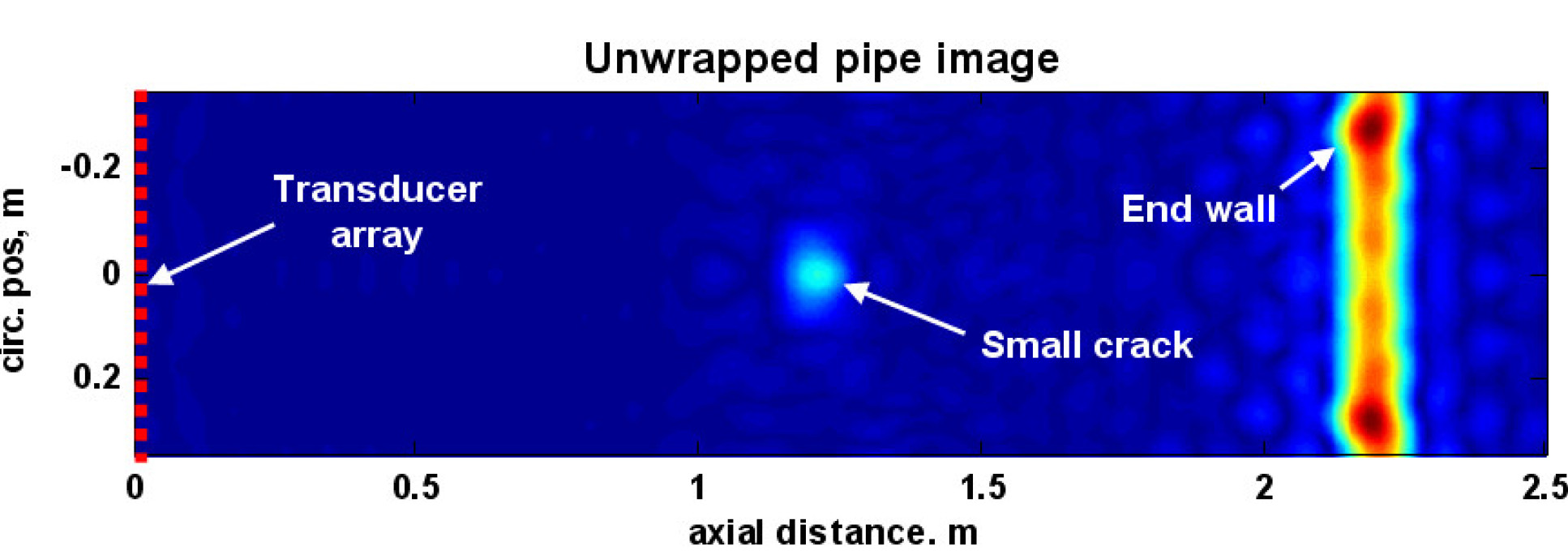High resolution guided wave inspection
Current guided wave inspection techniques developed at Imperial College are used for rapid screening of large areas of structure. An indication of defect size is obtained and in severe cases this is sufficient. However, other areas may be identified which should be investigated in more detail by local techniques in order to determine whether the structure is still serviceable. This presents no problem when the identified area is easily accessible for e.g. thickness gauging or TOFD but areas of concern are frequently less accessible e.g. at pipe supports or at the entrance to a buried or embedded region. It would therefore be very valuable to have a backup, higher resolution guided wave inspection system that would enable more accurate sizing and would be deployed in an accessible region close to the suspect area. This project seeks to develop such a system.

Sponsors
EPSRC, BNFL, dstl, British Energy
References
Davies, J. and Cawley, P. 'The application of synthetic focusing for imaging crack-like defects in pipelines using guided waves', IEEE Trans UFFC, Vol 56, pp759-771, 2009.


